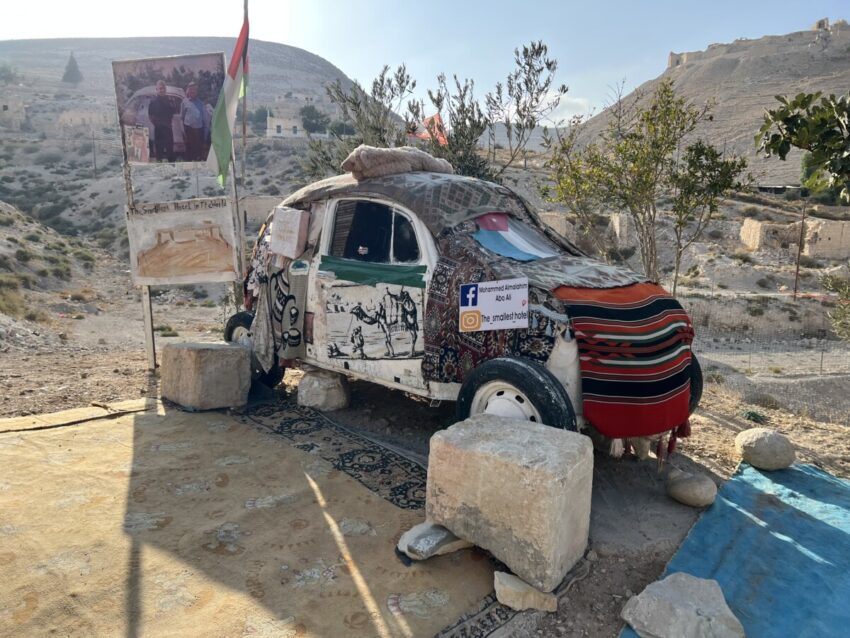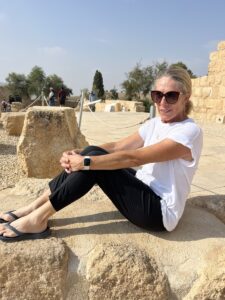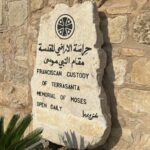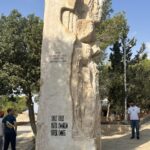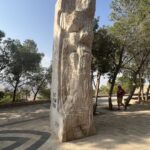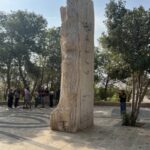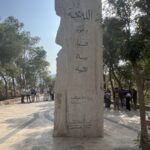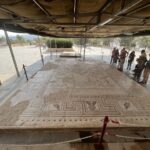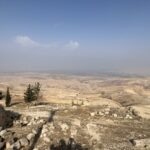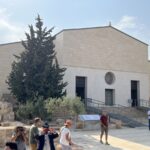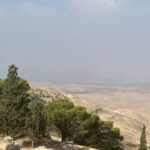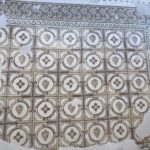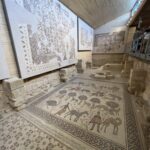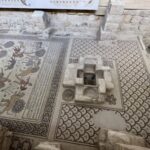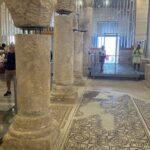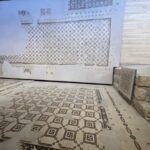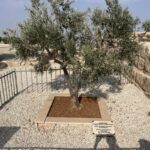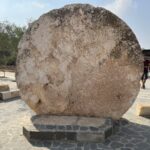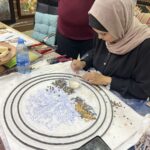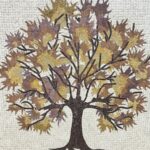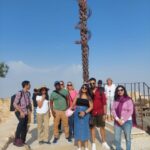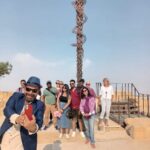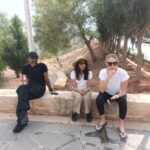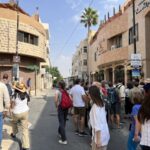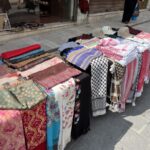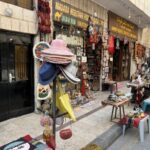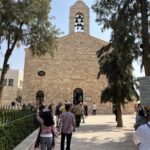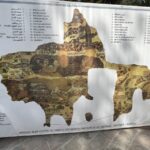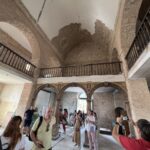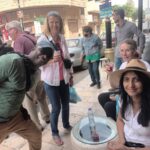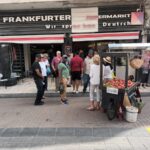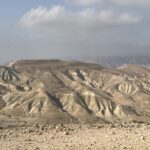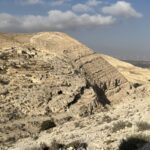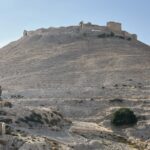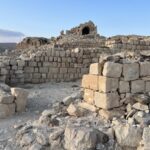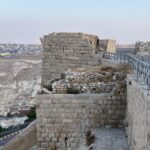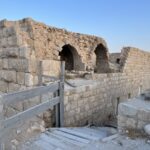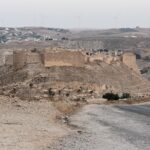Day 4 and we’re heading to Mount Nebo, which is located ten kilometres to the west of Madaba, approximately 700 metres above sea level, and contains breathtaking views of the Jordan Valley, Dead Sea, the West Bank and Jerusalem. Mount Nebo is a historically and spiritually significant mountain that holds deep religious importance for Christians, Jewish people, and Muslims. According to the Bible, it’s where Moses stood and saw the Promised Land before his death. The Mount Nebo complex which was discovered by Duke Lutyens in 1864, and which the Institute of the Franciscan Fathers began archaeological excavations on in 1933, consists of a complex of archaeological sites of Christian pilgrimage and the Church since the late fourth century AD. Mount Nebo, or “Siyaghah” as the area is know in Arabic, includes an extensive compound of churches, monasteries, graveyards and groups of stunningly beautiful floor mosaics. We explored the remains of the areas old buildings before reaching the main church at the top of the hill. The remains of the church and the monastery built atop Mount Nebo were discovered in 1933. The site appears to have been a building for a chapel established by early Christians in the second half of the fourth century AD in honour of the prophet Moses. We could still see the main elements of the church, including a mosaic panel of a cross vertically fastened to the south end of the church’s altar. The church itself was expanded, and became a more elongated and spacious structure in the fifth century AD. It was rebuilt again in the year 597AD after being damaged by a major earthquake in the same year. Part of the monastery had been built over the foundations of a church built on the same spot. It is reported that the monks from Egypt built the monastery, which contains a number of beautiful mosaics. One of the mosaics inside the church is a large square divided into two sections. The top section depicts hunting scenes while the lower section depicts pastoral scenes with a touch of the exotic. Excavations have also uncovered six graves that had been lying beneath the natural rock below the church. The church boasts some of the finest Byzantine era mosaics.One of them is a mural in a North Hall room once inhabited by a patron of the old church, The mural, discovered in 1976, depicts scenes of the clergymen and hunting trips. According to two inscriptions, the painting was completed in 531AD.
On the 20th March 2000, Pope John Paul 11 landed in Amman to begin his Jubilee Pilgrimage to the holy Land. From Mount Nebo, he looked upon the land which was promised to the Prophet Moses. On this occasion, he planted an olive tree as a symbol of peace in honour of the people who now live in these lands.
The bronze serpentine cross wrapped outside of the church was designed by Italian artist Giovanni Fantoni and placed peering out over the Jordan Valley. It serves as both a symbol for the snake of Moses in the wild and the cross upon which Christ was crucified. Today, the Mount Nebo Church is used by worshippers to pray on several occasions such as Xmas.
On to Madaba which is an amiable market town best known for a collection of Byzantine-era mosaics. The most famous of these is the map on the floor of St George’s Church, but there are many others in different parts of the town, several of them even more complete and vibrantly colourful. The map is composed of thousands of tiny colored stones and depicts the region from Lebanon in the north to Egypt in the south, and from the Mediterranean Sea in the west to the Arabian Desert in the east.
Final stop today is Shobak Castle, an enchanting castle that was built in 1115 under the rule of King Baldwin I. It is particularly striking due to its remote location in the desert. Within the castle grounds, visitors can explore the churches, historic ruins, and a secret passageway that leads to a charming spring. The castle also boasts a watchtower, catacombs and a number of Christian carvings and Islamic tablets. On the way to the castle we passed the smallest hotel in the world, shown as the featured image for this blog!!! We had a tea there with the owner of the “smallest hotel who had several photos in his tea shop of all the dignitaries he had met over the year.

